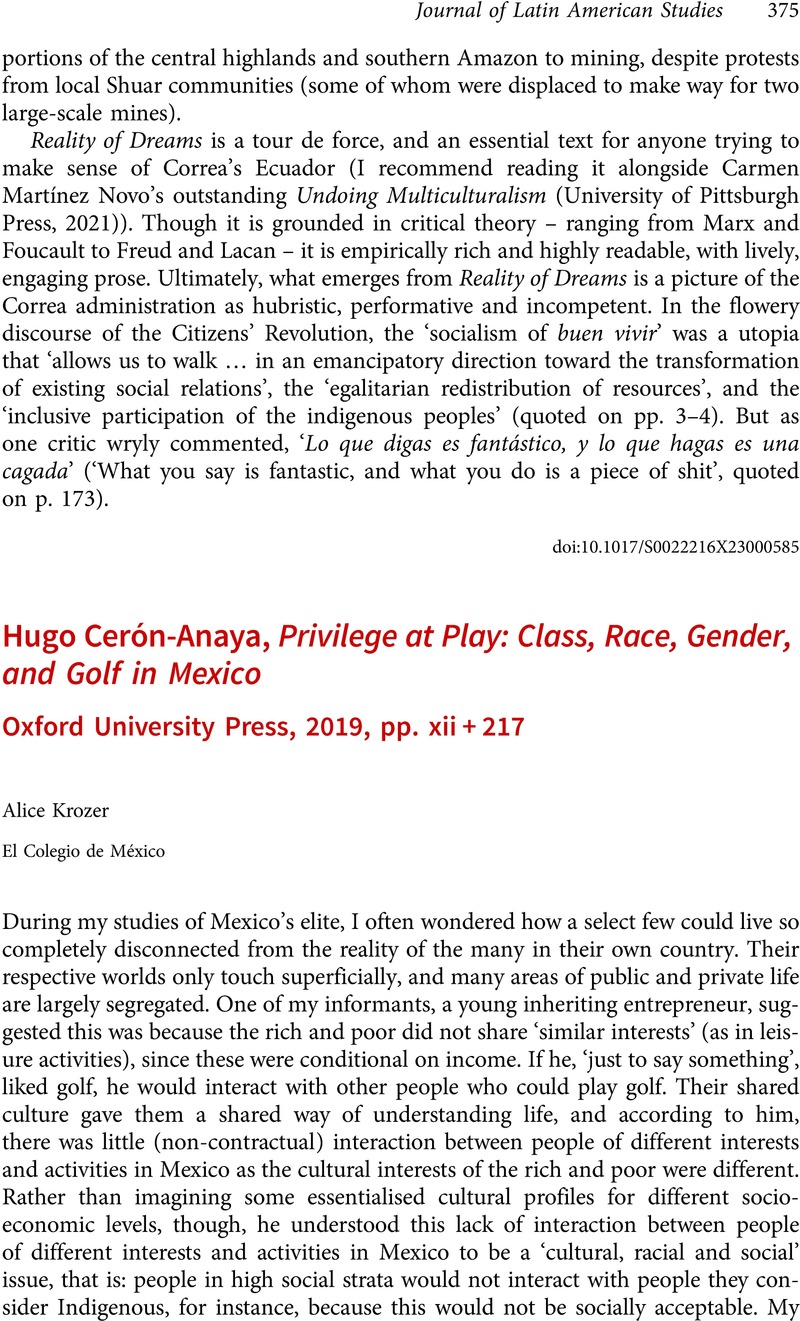No CrossRef data available.
Article contents
Hugo Cerón-Anaya, Privilege at Play: Class, Race, Gender, and Golf in Mexico Oxford University Press, 2019, pp. xii + 217
Review products
Hugo Cerón-Anaya, Privilege at Play: Class, Race, Gender, and Golf in Mexico Oxford University Press, 2019, pp. xii + 217
Published online by Cambridge University Press: 19 June 2023
Abstract
An abstract is not available for this content so a preview has been provided. Please use the Get access link above for information on how to access this content.

- Type
- Reviews
- Information
- Copyright
- Copyright © The Author(s), 2023. Published by Cambridge University Press



